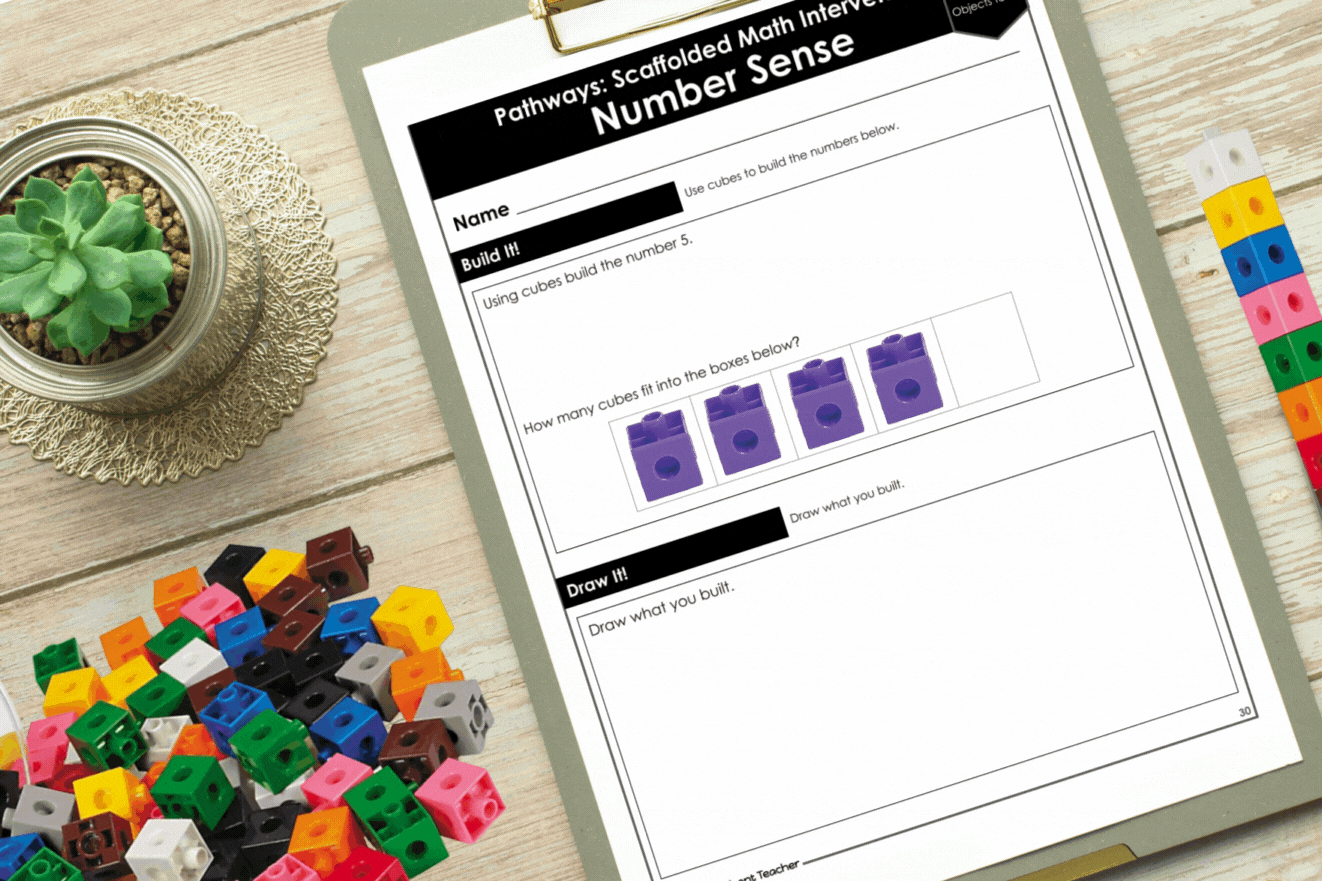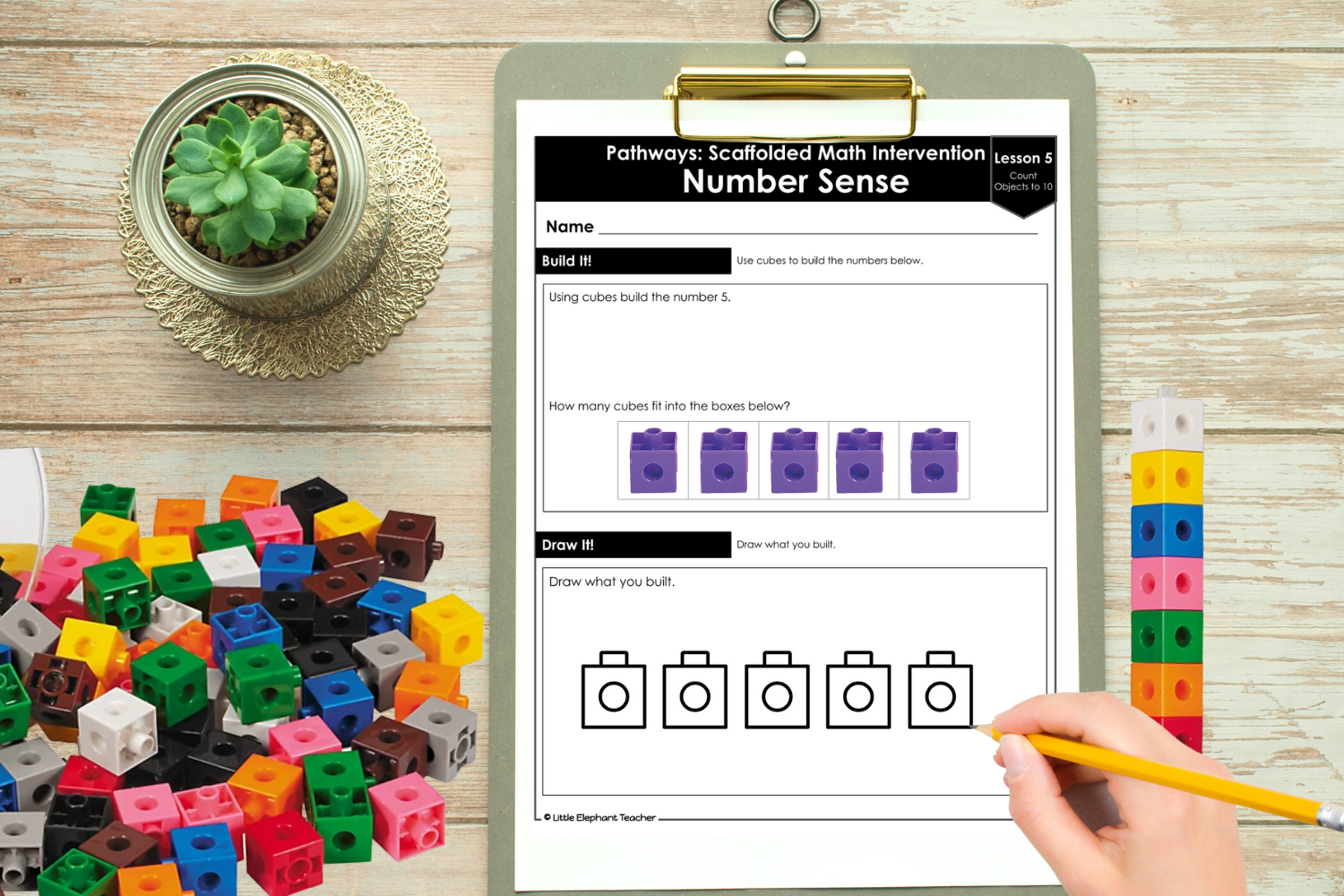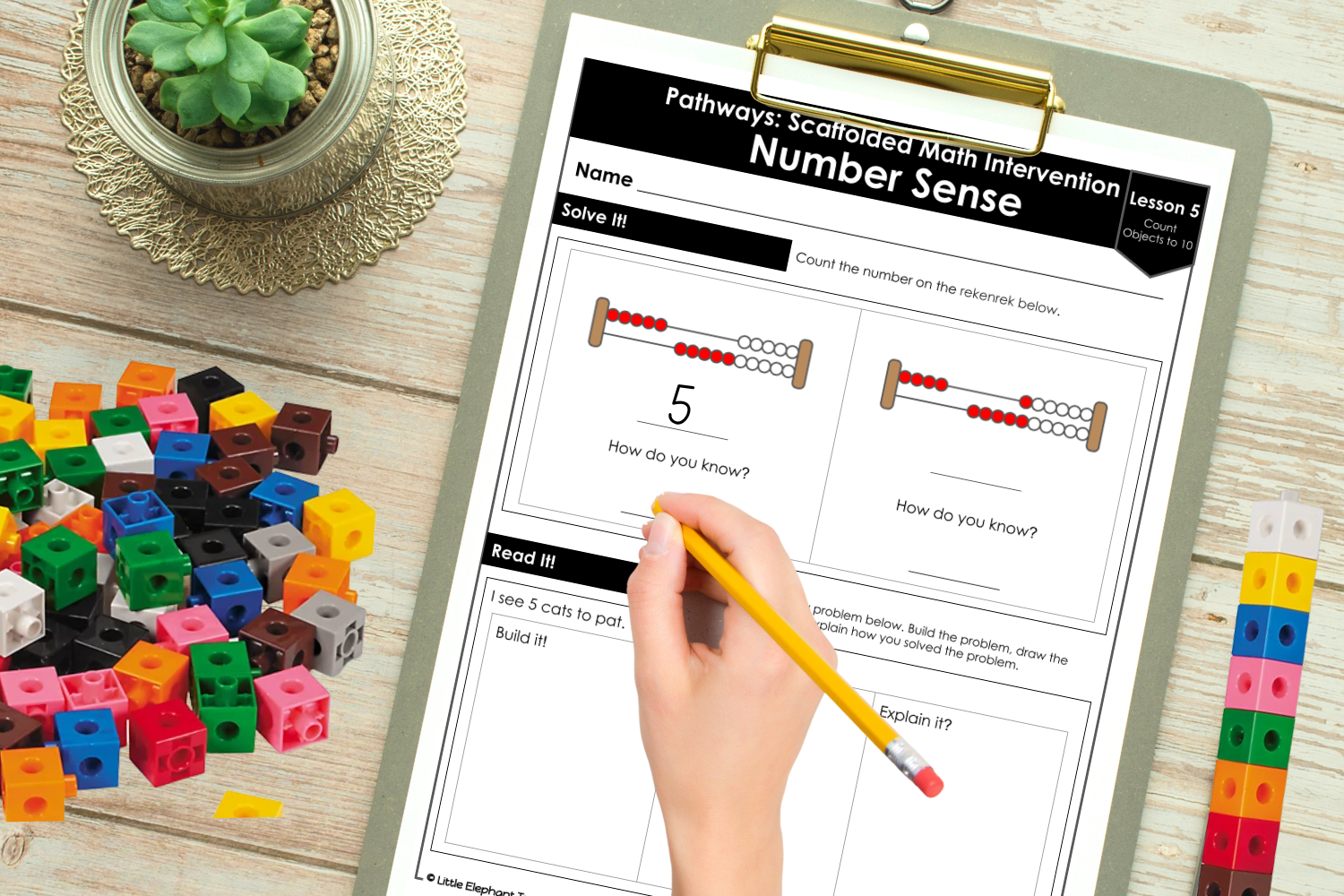Concrete Pictorial Abstract: 3 Powerful Examples for Counting Objects to 30
Are your students struggling to gain a deeper understanding of Counting Objects to 30? These Number Sense worksheets, for a Kindergarten small math group, are packed with engaging lessons focusing on Number Sense Activities that use Concrete Pictorial Abstract examples. Utilizing the Concrete Pictorial Abstract Approach, developed by Jerome Bruner, give students the opportunity to experiment with mathematics in various ways.
Grab a free Sample Lesson Below!
What is Concrete Pictorial Abstract (CPA) Approach?
The CPA approach consists of three stages of learning.
1. Learning through physical manipulation of concrete objects.
2. Learning through pictorial representations of manipulation of concrete objects.
3. Solving conceptual problems.
(Witzell, 2005)
This teaching approach uses Concrete Pictorial Abstract Examples to build upon students’ existing math knowledge. Introducing abstract concepts in a tangible way involves moving from manipulating concrete materials, to drawing pictorial representations of math problems, to using abstract symbols and problems. This highly effective approach to teaching develops a deep and sustainable understanding of math.
What is the difference between concrete pictorial and abstract?
Concrete Math
Learning through Physical Manipulation of Concrete Objects
Build it! Concrete is the “doing” stage. Allow your students to experience and handle physical (concrete) objects to solve problems. In this math intervention, students will physically hold math tools in their hands and count the objects out one at a time. For example, if your students are using cubes they will physically count out each cube until they reach the given number.
2. Pictorial or Representational Math
Learning through pictorial representations of manipulation of concrete objects.
Draw it! - Pictorial is the “seeing” stage. This stage encourages children to make a mental connection between the physical object (math tool) they just had their hands on to the pictures, models, or diagrams representing the math tools from the problem. This intervention allows students to draw the math tools they were using. For example, they will draw the number of cubes they just counted out.
3. Abstract Math
Solving conceptual problems.
Solve it! - Abstract is the “symbolic” stage. You will introduce the concept using only numbers and mathematical symbols to represent addition, subtraction, multiplication, or division (for example, +, –, x, /). This math intervention will give students a number and they will be able to explain what that number means. For example, students will write down the number they just counted out and explain what that number means.
This math intervention uses 3 Powerful Concrete Pictorial Abstract Examples that will truly allow students to understand Counting Objects up to 30. These number sense activities focus on the skills and concepts needed to count, read, write, and understand numbers up to 30. The collections of Number Sense Worksheets offered in this unit can be used to provide math intervention for students who are struggling with one or more of the following:
Counting forward and backward by 1s
Write Numerals to 30
Number Identification
Counting up to 30 objects with one-to-one correspondence
30 Math Lessons and Number Sense Worksheets that follow an intentional format:
1. Warm Ups
Counting Routines - Clear Engaging Routines with Digital Tool Available.
Number Talks - Pictures of Math Tools - Ten Frames, Dice, Cubes, Base Ten Blocks, Number Rekenrek, Dominos, Real Objects, Tallies, Dots, and Fingers.
2. Review
Number Identification
Number Writing
Problem of the Day
3. Activity
The Concrete, Pictorial, Abstract approach (CPA)
Decodable Word Problems
4. Games
Games that Connect to the Math Skill being taught
5. Exit Ticket
Quick formative assessment
*****************************************************************************
Pathways: Scaffolded Math Intervention Scope and Sequence
Do you want the full Math Intervention?
Volume 4: Subtraction - Kindergarten through 5th Grade
Volume 5: Multiplication - 2nd through 5th Grade
Volume 5: Division - 2nd through 5th Grade
Check out the preview to get a Sample Number Sense Worksheet to try with your Students






